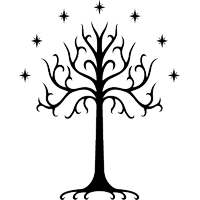Excerpted from a longer piece by Michael O’Meara from The Occidental Quarterly Online, originally published on May 4, 2009: “Klansmen, Irishmen, & Nativists: The Origins of Racial Nationalism in America”.
As European immigrants, native Americans, and the first Chinese made their way to California in this period [middle 1880s], so too did racial conflict—though conflict here would not be between natives and immigrants, but between Occidentals and Orientals, White against Yellow.
Standing together against the first Chinese arrivals—and to the swarming millions threatening to follow in their wake—native Americans and Irish Catholics discovered their common racial identity. In such a situation, white solidarity was paramount—which meant that, in face of the Yellow Hordes, religious differences dividing Protestant natives and Catholic immigrants in the antebellum period had to be superseded.
Accused of cheapening labor and introducing foreign elements in the East, the Irish were now welcomed into California nativist ranks—as whites facing a common threat.
Then, in the late 1870s, in a period of economic crisis, a Workingmen’s Party, led by an Irish demagogue, Denis Kearney, was formed in San Francisco. Its principal slogan was “The Chinese must go.”
The movement’s achievements were momentous.
For the first time in modern history, national legislation (to supplant the less effective immigration law of 1790) was passed to prevent non-whites from entering the United States and preventing those already within its borders from setting down roots.
Racially consciousness, populist, and at times anti-capitalist, the anti-Chinese movement of the 1870s (whose spirit, incidentally, lived on in the national-socialist novels of Jack London) succeeded in preserving the American West as a white Lebensraum. As I see it (and I see it from both from an Irish and American perspective), it represents the single greatest movement of White America.
The third great formative influence affecting the shape of American racial nationalism—though a step back from the anti-Chinese movement—came during the First World War. The Ku Klux Klan, which had emerged after Appomattox to defend Southern whites from Negro aggression and the Yankee military occupation, was re-organized in 1915 to address certain changes in American life. Like the European fascist movements of the interwar period, this “Second Klan” constituted a mass populist reaction to the war’s radical cultural/social dislocations. In the same period, the middle-class family came under attack. Suffragettes carried the day with the 19th Amendment, a “new women,” promoted by advertisers and by Hollywood, questioned conventional “gender” relations, divorce rates suddenly shot up, and children were increasingly exposed to anti-traditionalist influences.
On every front, then, it seemed as if small-town, rural, and middle-class White America was in retreat. But not before making a last—and, for a generation, successful—stand in its defense, for within a decade of its founding, the Klan had rallied 5 million members to its ranks, penetrating local and national power-structures as few other anti-liberal movements in US history.
To the degree the Klan was more sectarian than racial, favoring the conformist, materialist, and philistine elements in American life, it was a step back from the white consciousness of the anti-Chinese movement. In this capacity, it forced the government to close the border to immigration, it beat back the black assault on white hegemony, it let the wheeler-dealers in Washington and New York know that their “progressive policies” would not go unchallenged in the Heartland, and it acted as a moral bulwark against the permissive forces of Hollywood and Madison Avenue.
Above all, it upheld a racial standard for American existence.
The history of American racial nationalism, as exemplified by the Second Klan, the Chinese exclusion movement, and the early nativists, is a history whose legacy has, in the last half century, been squandered and suppressed by the elites now controlling American destinies.
Yet this is the legacy that the heirs of European-America today, if they are to survive, need to reclaim. For this history confirms them in their belief that the popular classes in America have always rejected the creedal definition of the nation; that they refused to allow their society and territory to be overrun by non-whites; and that divisive sectarian issues (between Protestants and Catholics, leftists and rightists, modernists and traditionalists, etc.) served only the interest of their enemies.
Most of all, this heritage of American ethnonationalism calls on whites today, in this era of their dispossession, to defend the racial-cultural-civilizational “nation” to which they once belonged and which, if regained, might again distinguish them from the world’s less favored races.

























No comments:
Post a Comment